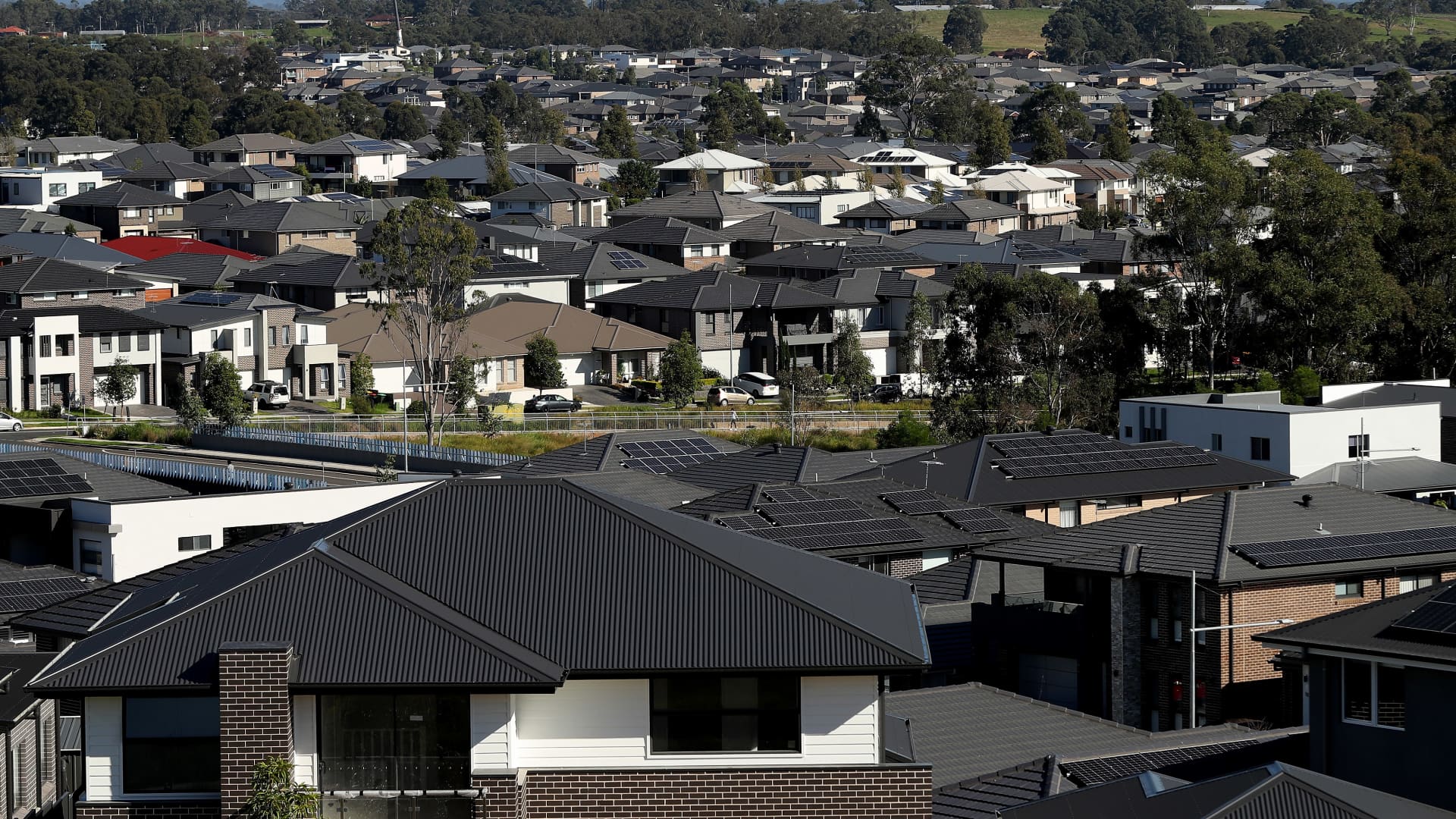Many Australian borrowers are ahead on their mortgage repayments, and this should cushion them from a hard landing as interest rates rise, according to Shayne Elliott, chief executive officer at major Australian bank, ANZ.
The Reserve Bank of Australia has hiked the official cash rate six times in a row this year to 2.6%, forcing up mortgage rates from lows of around 2% to about 5% to 6%. The housing sector in Australia is set to bear the brunt of higher interest rates as the central bank fights inflation.
Elliot told CNBC’s “Squawk Box Asia” on Thursday that many borrowers would be able to weather these changes, citing that about 70% of ANZ’s customers with variable rates had accelerated repayments. That would lower cash-flow pressures on borrowers as rates rise.
“As interest rates fell over the last 10 to 20 years, what people did is they used their savings to get ahead on their repayments,” Elliot said.
“As of today, 70% of our customers are ahead on their home loan repayments and of that 70%, a half of them are more than two years ahead.”
“As interest rates rise for many of those customers nothing changes. Why? They are reducing the amount of time they are ahead on their repayments. Customers are in pretty good shape.”
Delinquency rates will rise over the next year due to interest rate increases, cost-of-living strains and falling property prices.Moody’s
But for those with fixed rate mortgages, they could face some stress when their mortgage repayments surge in the coming years after their fixed terms end. Even then, most people should be able to cope given that banks in Australia had been buffering mortgage applications by 3%, Elliot added.
In 2019, the Australian financial regulator, the Australian Prudential Regulation Authority, told banks to apply a loan “serviceability buffer” of at least 2.5 percentage points before it rose to 3 percentage points in 2021.
It has implemented a 2% buffer since 2014 as part of its efforts to manage risks, such as containing a runaway housing market benefitting from historically low interest rates at the time as well as high levels of household debt. Home loans made up a large chunk of banks’ lending.
Mortgage rate increases for many borrowers, however, were edging closer to the buffer applied, the RBA said during its monetary policy meeting earlier this month.
The central bank noted that high levels of savings during the pandemic and a strong labor market with high incomes mitigated debt serviceability concerns.
“This, along with forbearance for some borrowers, had resulted in low levels of loan arrears,” the RBA said in its statement.
Elliot agreed, saying ANZ’s customers are heading into an uncertain time in “very, very robust shape.”
He said customers are not only increasing their savings and paying down their home loans but also other loans such as credit card loans. Wages of many customers have also kept up with inflation, he added.
“We’re very confident about our home loan book. The bite is going to be delayed because of all those factors that I talked about,” he said.
“As of today, people who are under stress with home loans that are 90 days past due are beginning to fall. So we have not yet seen a pickup in distress.”
Moody’s said in a report this week that while delinquencies over the 12 months ended in May dropped in most states in Australia, it predicts that “delinquency rates will rise over the next year due to interest rate increases, cost-of-living strains and falling property prices.”
“Falling house prices will increase the risk of home loan delinquencies and defaults, because a weakening housing market will make it harder for borrowers in financial trouble to sell their properties at high enough prices to repay their debt,” Moody’s said.
According to Moody’s, over the September quarter, house prices declined 6.1% in Sydney, 3.7% in Melbourne and 4.1% on average across Australia.
